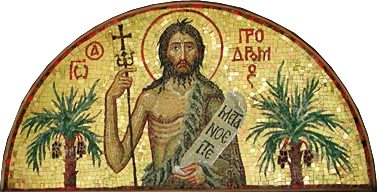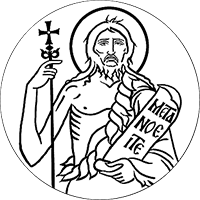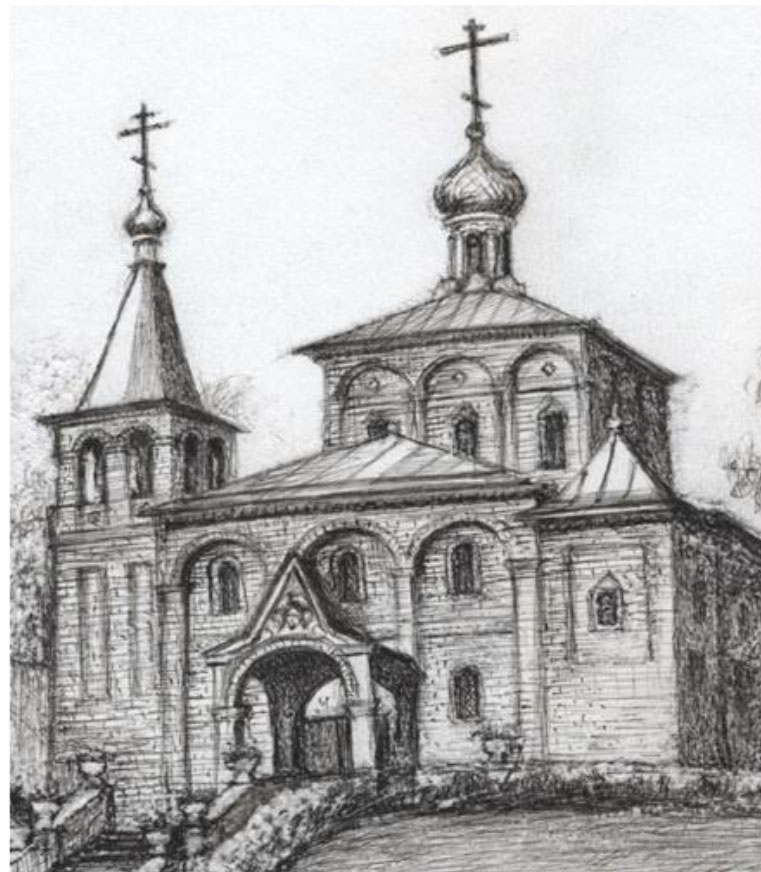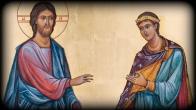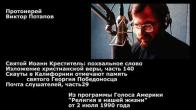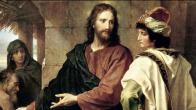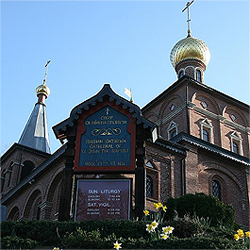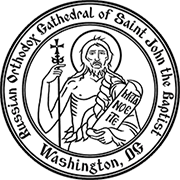You are here
How To Set Up a Home Prayer Corner
Parishioners often ask how one should set up a home chapel/prayer corner. We offer for your consideration the article by Serge Alexeev, and hope that in it our readers will find answers to the questions most frequently posed. The article has been abridged.
- Where to place icons at home?
- Which icons should you have at home?
- How and in what order should you arrange your icons? Are there strict rules in that regard?
- What should be our attitude toward holy things? What should you do if an icon's condition has rendered it unfit for use and it cannot be restored?
Quantity and quality are two different categories. It would be naïve to assume that the more holy images there are in an Orthodox Christian's house, the more pious his life is. A disorganized collection of icons, prints, religious wall calendars covering a significant amount of living space, can often have a directly opposite effect on a person's spiritual life.
…Poorly thought out assembling of a collection of icons can turn into simple, meaningless collecting, something in which the prayerful purpose of the icon has no role whatsoever.
Nonetheless, it is essential to have icons in one's home - in sufficient numbers, but within reasonable limits.
In the past, whether on the farm or in the city, any Orthodox family's home would always have a shelf with icons, or an entire home icon screen, located in the most visible place. The place where the icons were installed was known as the front corner, the bright corner, the holy corner, God's place, or the shrine.
For the Orthodox Christian, the icon is not just a depiction of the Lord Jesus Christ, the Mother of God, the Saints or of events in the history of the Church. The Icon is a sacred depiction, i.e. it rests outside the realm of ordinary reality; it is not to be confused with ordinary daily life, and is intended only for communion with God. Thus, the primary purpose of icons is for prayer. The Icon is the window from the world above into our world, the earthly world; it is God's revelation, made in delineated form and color. In this way, the Icon is not simply a family relic to be passed on from generation to generation, but a holy thing - a holy thing that unites all of the members of the family during communal prayer, for prayer in common can take place only if those standing before the Icon have mutually forgiven one another's offenses, and have achieved complete unity.
Of course, to a great extent today, when the place of the icons in the home has been taken by the television set, itself a kind of a window into the motley world of human passions, the purpose of the family icon, the tradition of common prayer at home, and the consciousness of the family as the "little Church" has been lost.
Therefore, the Orthodox Christian living in a city apartment today may ask: What icons must I have in my home? What is the proper arrangement for them? Can I use reproductions of icons? What do I do with old dilapidated icons?
Some of these questions merit an unequivocal answer, while others do not demand any kind of strict recommendations.
Where to place icons at home?
In an available and accessible place.
The terse nature of such an answer is evoked by the realities of life, rather than by the absence of canonical requirements.
Of course, it is preferable to place icons on the eastern wall of the room, because the East as a theological concept has special significance in Orthodoxy.
And the Lord God planted a garden eastward in Eden; and there he put the man whom he had formed. (Genesis 2: 8)
O Jerusalem, look about thee toward the east, and behold the joy that cometh unto thee from God. (Baruch 4: 36)
Moreover the spirit lifted me up, and brought me unto the east gate of the Lord's house, which looketh eastward. (Ezekiel 11: 1)
For as the lightning cometh out of the east, and shineth even unto the west; so shall also the coming of the Son of man be. (Matthew 24: 27)
But what do you do if the house is so oriented that there are windows or doors on the eastern side? In that case, use the Southern, Northern, or Western walls of the home.
One must not combine icons with decorative objects of a secular nature such as statuettes, various types of panels, etc.
It is inappropriate to put icons onto a bookshelf next to books having nothing in common with Orthodox Truth, or books conflicting with the Christian teaching on love and charity.
It is absolutely impermissible to have icons next to signs or wall calendars on which there are photographs of rock musicians, athletes, or politicians - the idols of the current age. This not only diminishes the significance of reverence for holy images to an unacceptable level, but also puts holy icons on a par with idols of the contemporary world.The home iconostasis can be decorated with live flowers. Traditionally, larger icons are often framed with towels. This tradition dates back to antiquity and has a theological basis. According to Tradition, an image of the Savior miraculously appeared during His life on earth in order to help a suffering man. After washing His Face, Christ wiped His Face with a clean towel, and an image of His Face appeared upon it; the towel was sent to the city of Edessa, in Asia Minor, to King Abgar, who was afflicted with leprosy. Upon being healed, the ruler and his subjects adopted Christianity, and the Image-Not-Made-By-Hands of Jesus Christ was affixed to a "permanent plaque" and raised above the city gates.
In times past, 29 August (new style calendar), the day the Church commemorates the translation of the Image Not-Made-By-Hands of our Lord Jesus Christ from Edessa to Constantinople in 944, was known among the people as the feast of the "canvas" or "linen Savior," and in some places fabric and towels made of homespun yarn were blessed.
These towels were richly embroidered and were reserved for use in the Bozhnitsa. Likewise, icons were framed by towels used during weddings and during Molebens with the Blessing of the Waters. Thus, for example, after the service for the Blessing of the Waters, when the priest would sprinkle [the icons] abundantly with Holy Water, people would wipe the icons with special towels and would incorporate them into the Bright Corner.
There is a tradition that, after the celebration of the Lord's Entry into Jerusalem, or Palm Sunday, pussy willow branches that had been blessed in church are to be kept near the icons until the next Palm Sunday.
It is the custom that on Pentecost, the Day of the Holy Trinity, the dwelling and icons should be decorated with birch branches as a symbol of the thriving Church, bearing the grace-filled power of the Holy Spirit.
Which icons should you have at home?
It is essential to have icons of the Savior and of the Mother of God. The Image of the Lord Jesus Christ - bearing witness to the Divine Incarnation and Salvation of humankind, and that of the Theotokos, the most perfect of those living on earth, the one made worthy of complete deification, the one revered as more honorable than the Cherubim and beyond compare more glorious than the Seraphim (Hymn of praise to the Most-holy Theotokos) - are an essential part of the Orthodox Christian home. The icon of Christ ordinarily selected for prayer at home, is that of the Lord Pantokrator, a waist-length depiction of the Savior. (…)
Those with room for a greater number of icons in the home may supplement their iconostasis with depictions of revered local saints and, of course, of the great saints of Russia.
Russian Orthodoxy has a strong tradition of special veneration for Holy Hierarch Nicholas the Wonderworker; almost every Orthodox family has an icon of St. Nicholas. One should note that together with the icons of the Savior and the Mother of God, the image of St. Nicholas the Wonderworker has always occupied a central place in the Orthodox Christian home. The people revere Holy Hierarch Nicholas as a saint endowed with special grace. This in large part stems from the fact that according to the Church rubric, each Thursday, when the Church offers up prayers to the Holy Apostles, it also offers up prayers to St Nicholas the Wonderworker, Archbishop of Myra in Lycia.
Among the icons of the Holy Prophets of God, that of the Prophet Elias holds a prominent place; prominent among the icons of the Holy Apostles, is that of the Pre-eminent Apostles Sts. Peter and Paul.
Among the images of martyrs for the Faith in Christ most often encountered are icons of Holy Great Martyr and Trophy-bearer St. George, and the Holy Great Martyr and Healer St. Panteleimon.
It is recommended to have depictions of the Holy Evangelists, of St. John the Baptist, of the Holy Archangels Gabriel and Michael, as well as icons of the Feasts, to make a home iconostasis complete.
The selection of icons for the home is always an individual matter. The best person to help one make those choices is the priest, the family spiritual director, and it is to him, or to another clergyman, that one should turn for advice.
As for icon reproductions and color photographs, sometimes it makes more sense to have a good reproduction than a painted icon of poor quality.
The iconographer must maintain a very demanding attitude toward his work. Just as the priest has no right to serve the Liturgy without the necessary preparation, the iconographer must approach his service with all due, full, awareness of responsibility [he bears for his work]. Unfortunately, both in the past and today, one often encounters vulgar examples of [icons that are] things bearing no resemblance to icons. Thus, if a given depiction does not evoke a sense of piety and a sense of contact with the holy, if its exposition is theologically questionable and its technical execution is unprofessional, it would be best not to purchase such an item.
However, reproductions of canonical icons, mounted on a firm backing, and blessed in the Church, can occupy a place of honor in the home iconostasis.
How and in what order should you arrange your icons?
Are there strict rules in that regard?
In church, yes. As to the home prayer corner, we may limit [discussion] to but a few principal rules.
For example, an assemblage of icons hung without a sense of symmetry, without a well thought-out arrangement, evokes a constant sense of dissatisfaction with the arrangement, a desire to change everything, something that often distracts from prayer.
It is likewise essential to remember the principle of hierarchy: for example, do not put an icon of a locally venerated saint above the icon of the Holy Trinity, the Savior, the Mother of God, or the Apostles.
Just as in a classic iconostasis, the Icon of the Savior must be to the right, and the Mother of God to the left [of the center of the prayer corner].
What should be our attitude toward holy things?
As one of the attributes of God (Holy, Holy, Holy is the Lord Sabaoth! (Isaiah 6: 3) holiness is also reflected in the worthy ones of God and in physical objects. Therefore, reverence for holy people and sacred objects and images, and likewise a personal striving toward authentic Communion with God are manifestations of a single order.
And ye shall be holy unto me: for I the Lord am holy... (Leviticus 20: 26).
A patronal icon has always been held in particular reverence. Following baptism, an infant would be brought before the icon and the priest or the master of the house would read prayers. Parents would bless their children with the icon to pursue studies, to go on extended journeys, and to engage in public service. As a sign of their approval of a wedding, the parents would likewise bless the newlyweds with an icon. Moreover, a person's departure from this life would take place in the presence of icons.
The well-known expression "you were divorced; at least bring out the saints" bears witness to people's conscientious attitude toward icons. It would be impermissible to have arguments, or engage in rowdy or otherwise improper behavior before the images of the saints.
One should instill proper reverence for holy images [in children] from a very early age.
What should you do if an icon's condition has rendered it unfit for use and it cannot be restored?
Under no circumstance can such an icon, even one that has not been blessed, be simply thrown away. A holy item, even if it has lost its original appearance, should always be treated with reverence.
If the condition of the icon has deteriorated with age, it should be taken to the church, to be burned in the church furnace. If that should be impossible, you should burn the icon yourself, and bury the ashes in a place that will not be sullied or disturbed, e.g. in a cemetery or under a tree in the garden.
The faces that look out at us from the icons belong to eternity. Gazing upon them, raise up your prayers to them, asking for their intercession. We, the inhabitants of the earthly world must never forget our Creator and Savior, His eternal call to repentance, His call to constantly perfect ourselves, and his call for the deification of each human soul.
PARISH LIFE
RECENT VIDEOS
Address of our Cathedral
Subscribe to our mailing list
While all the materials on this site are copyrighted, you may use them freely as long as you treat them
with respect and provide attribution on the Russian Orthodox Cathedral of St.John the Baptist of Washington DC.
